Wildlife ponds: a complete guide on how to build this nature-friendly feature in your plot
Wildlife ponds are perfect for welcoming life into your space and can look lovely too. Our tips provide everything you need to get started

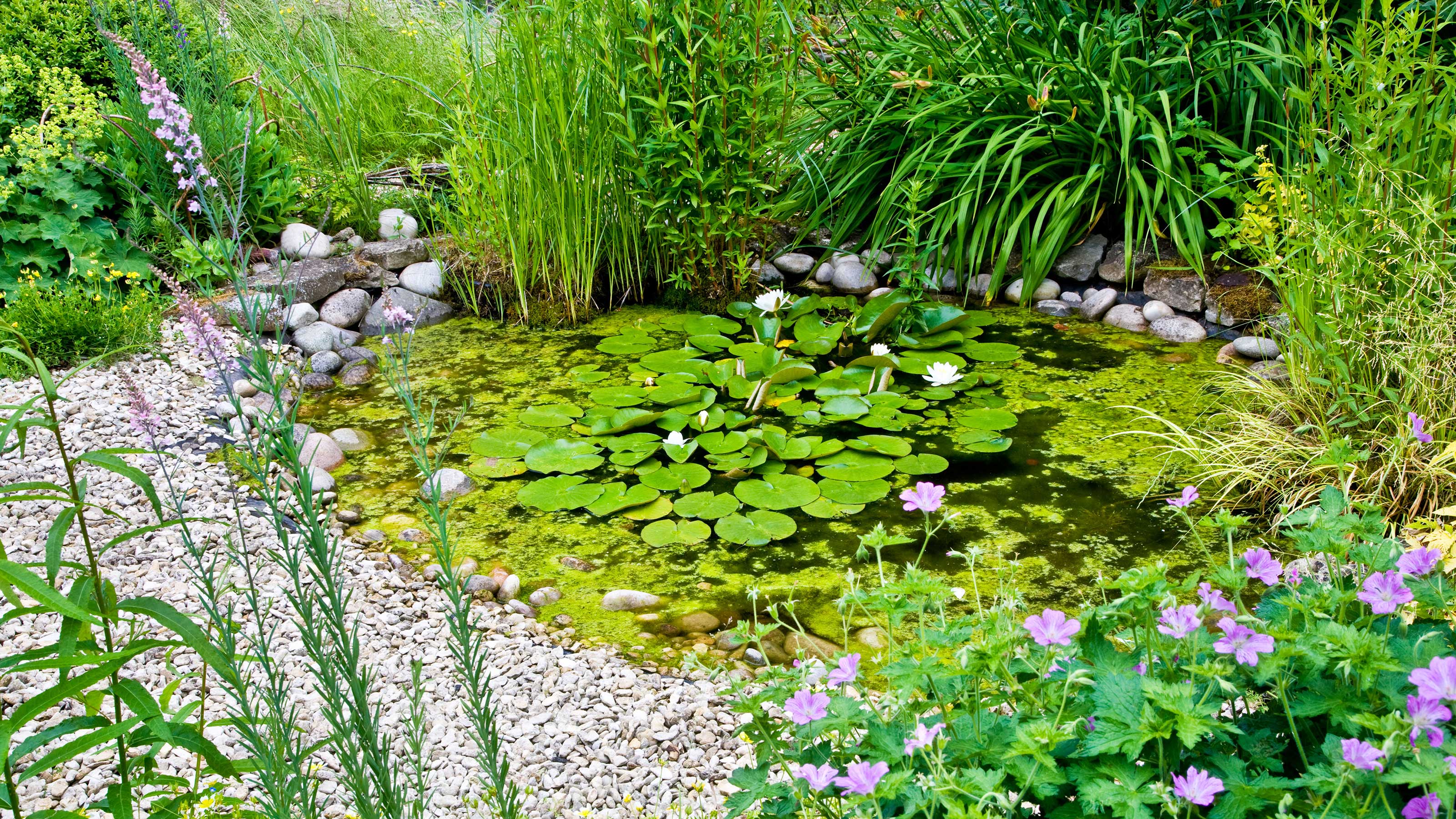
For those who want to make their plot more environmentally friendly, wildlife ponds are a must. In fact, they're one of the best features you can add to give visiting critters a helping hand, even if you opt for just a tiny design.
Whilst all garden ponds are valuable for wildlife to some degree, there are things you can do to make them as welcoming as possible. After all, it's lovely to have more life in your garden – who doesn't like watching visiting birds, dragonflies, and perhaps a frog or two going about their merry way? But, it's not just about making your outdoor space a more joyful place to be (although that is, of course, important too). In the grander scheme of things, wildlife ponds play a critical role in helping to mitigate the decline of natural habitats.
As The Wildlife Trusts explains, the UK has lost ponds, rivers and streams at a rapid rate and now, only a small amount of natural ponds and wetlands remain. 'Many of these are in poor condition and 13% of freshwater and wetland species are threatened with extinction from Great Britain.'
'The loss of these important places – to development, drainage and intensive farming – is linked to a huge decline in wildlife, including frogs and toads, water voles and insects,' they continue. And it's not just in the UK – habitats are being destroyed all over the world.
If as many people as possible create a wildlife habitat in their own outdoor space, there's a greater chance of protecting local species. And as you'll soon see from this guide, it's not tricky or expensive to do. So, why not make it your next DIY project?
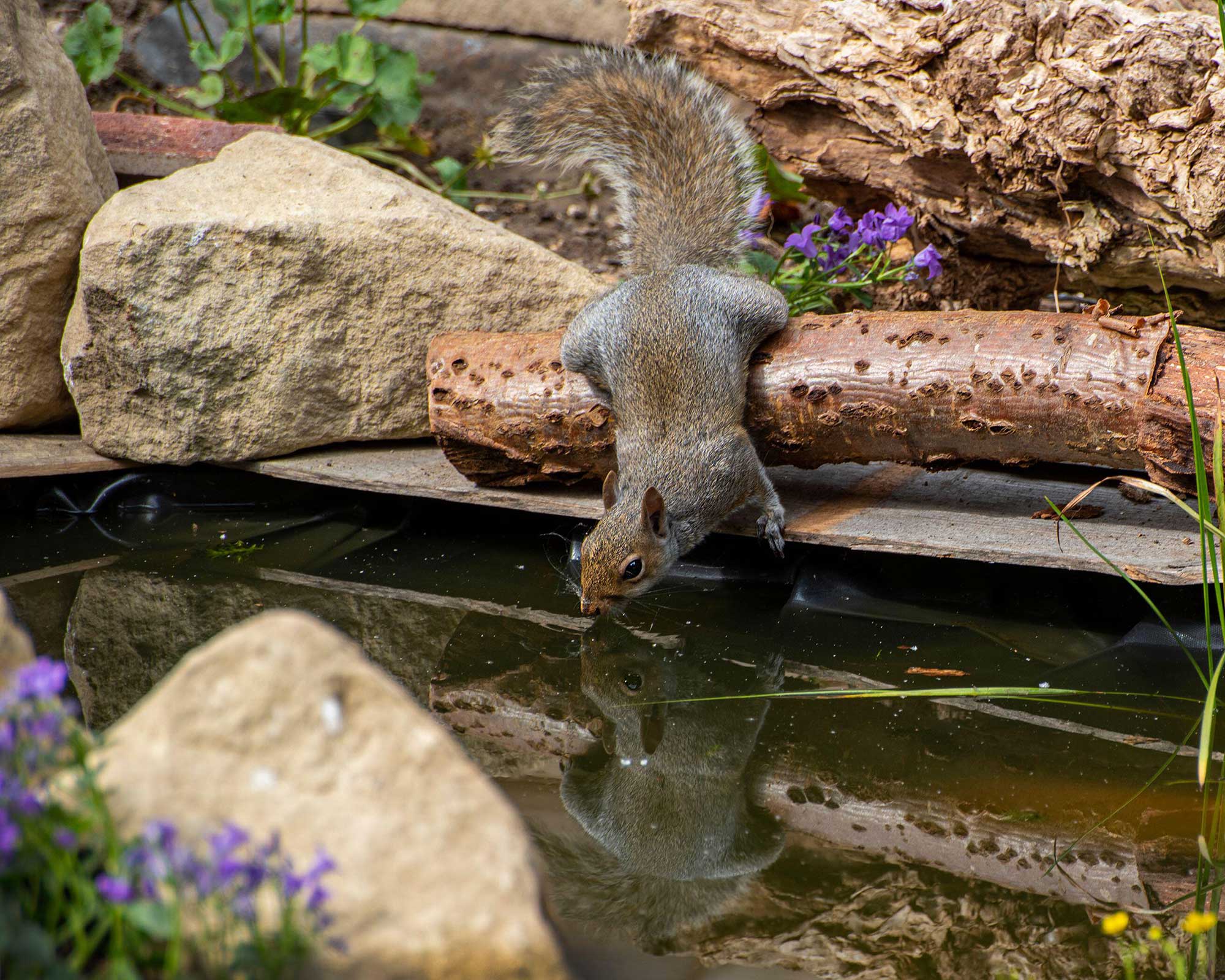
A simple guide to wildlife ponds to help you make one at home
We've bought together everything you need to know to start building your own nature-friendly pond. From a simple step-by-step guide to tips on where to place it and which plants to choose, you'll be ready to welcome in wildlife in no time.
How do you build a wildlife pond?
Wildlife ponds are one of the easiest garden features to make. The experts give their advice on how to do it:
- 'Start off by finding or buying a large container to hold the water needed for a pond,' says Chris Bonnett of GardeningExpress.co.uk. 'It could be a specialist shape from a garden center, or an old sink, washing up bowl or plant pot. However, it must be strong enough to withstand being outside year round, especially during heavy frosts.'
- 'Once the container has been picked, it is time to dig a hole deep enough for the container to sit flush to the ground, says Chris. 'Levelling the container with the ground will allow a range of creatures to get in and out. However, those wanting a raised pond can add plants, bricks and stones around the edge to act as a step for the wildlife.'
- You can also add rocks and stones to the bottom of your pond – this can offer hiding places for newts.
- 'Then, fill your pond!' says the team at RSPB. 'Tap water has a lot of chemicals that aren't good for a pond, so always use rainwater whenever possible.' Adding a water butt to your plot makes this easy and is, in general, a great option for more sustainable gardens.
- 'It's then ready for planting,' continues the RSPB. 'It's best to put in plants with special aquatic plant pots with mesh sides, and use a very low nutrient soil mixed with grit. For a small pond only use two or three plants, otherwise it will get overcrowded.'
- Don't forget to provide a means for wildlife to get in and out of the pond easily. Use bricks, rocks, or logs, says the RSPB. 'Think, "if I was a hedgehog, would I be able to climb out of here?"' they add. Our wildlife pond edging ideas feature has lots of suggestions that look great, too.
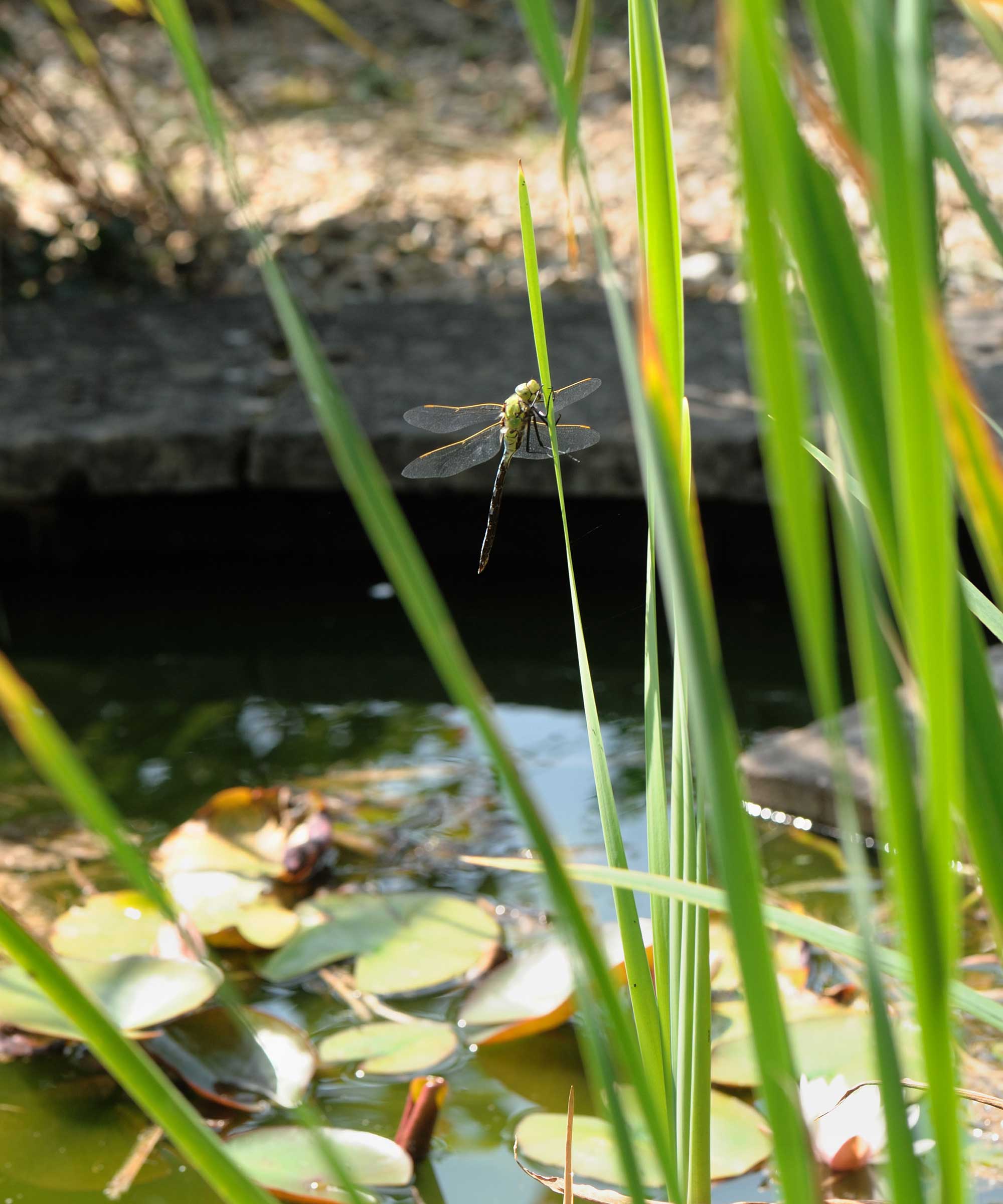
How big should a wildlife pond be?
Our small garden pond ideas demonstrate how you don't need acres of space to introduce a water feature, and wildlife ponds are just the same. 'Ponds can be as big or as small as you like – even a bucket placed in the ground can be a home for wildlife!' says Adrian Thomas, the RSPB's wildlife gardening expert.
'However, the bigger the pond the more wildlife it will attract, and it's always good to have multiple levels in the pond if possible as it allows a wider range of wildlife to find their niche.
'In terms of depth, aim for 60cm [23.5in] in the middle of a larger garden pond, but shallows are good for pondlife. Ensure that you have a gently sloping "beach" or ramp for animals to find their way in – and out.'
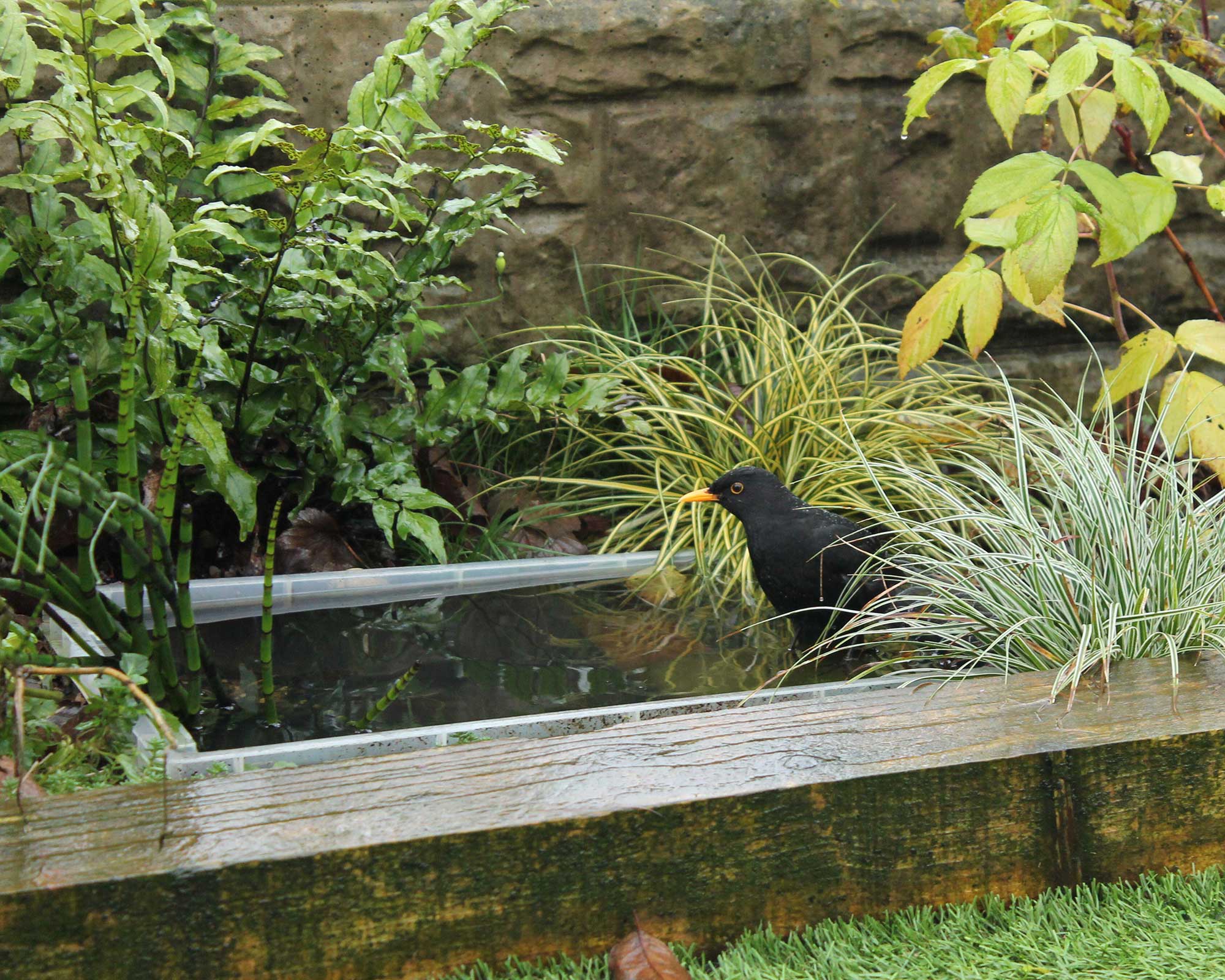
Should you add a pump to your wildlife pond?
Pond ideas with waterfalls and fountains are often contemplated for their soothing and sensory qualities. However, if you're looking to make your pond as nature-friendly as possible, you might wish to reconsider, due to the pump that they use.
'Some people use pumps as a way to aerate pond water and keep the pond healthy, but in a well-functioning pond the aquatic plants and minibeasts should do that job for you,' says Adrian Thomas of the RSPB. 'Pumps can also pose a danger to wildlife, especially all the small creatures that can get sucked into the pump.
'If you are finding that your pond is getting a bit stagnant, or that algae is a problem, make sure you fish out any leaves that fall into the water,' and 'only top the pond up with rainwater (as tap water can contain nutrients),' he says.
You'll also want to find the right balance of pondweed, which helps to keep a pond clear. 'Either add extra pondweed if your pond has very little, or gently reduce the amount of weed if the pond is clogged, leaving it on the pond edge for a day or so for any pondlife to crawl back in.'
You can find more tips on how to clean a pond in our guide.
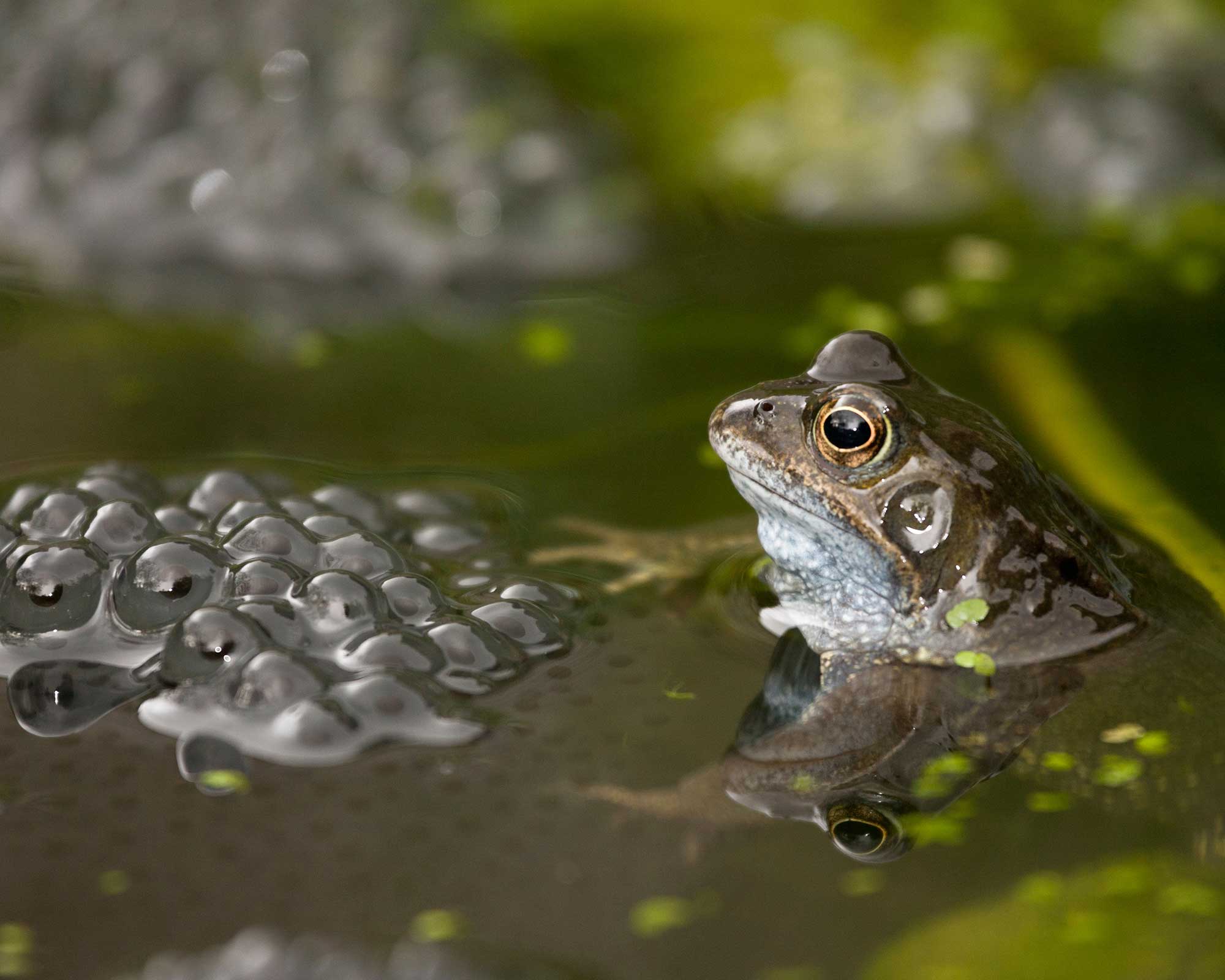
Where should a wildlife pond be placed?
'Ponds do best in places that get sunshine for at least part of the day,' says Adrian Thomas. However, bear in mind that lots of sun can speed up algae growth, so it's best to find a spot that gets a bit of shade, too.
'Place them away from overhanging trees as too many leaves falling in can cause problems when they rot (though you can also just fish them out regularly as well),' continues Adrian.
'It's also a great idea to place it within view of your windows – that way you can enjoy your pond and the wildlife it’s attracting throughout the day. And, always think about safety – if young children may access the pond, put a little fence around it until they are a bit older.'
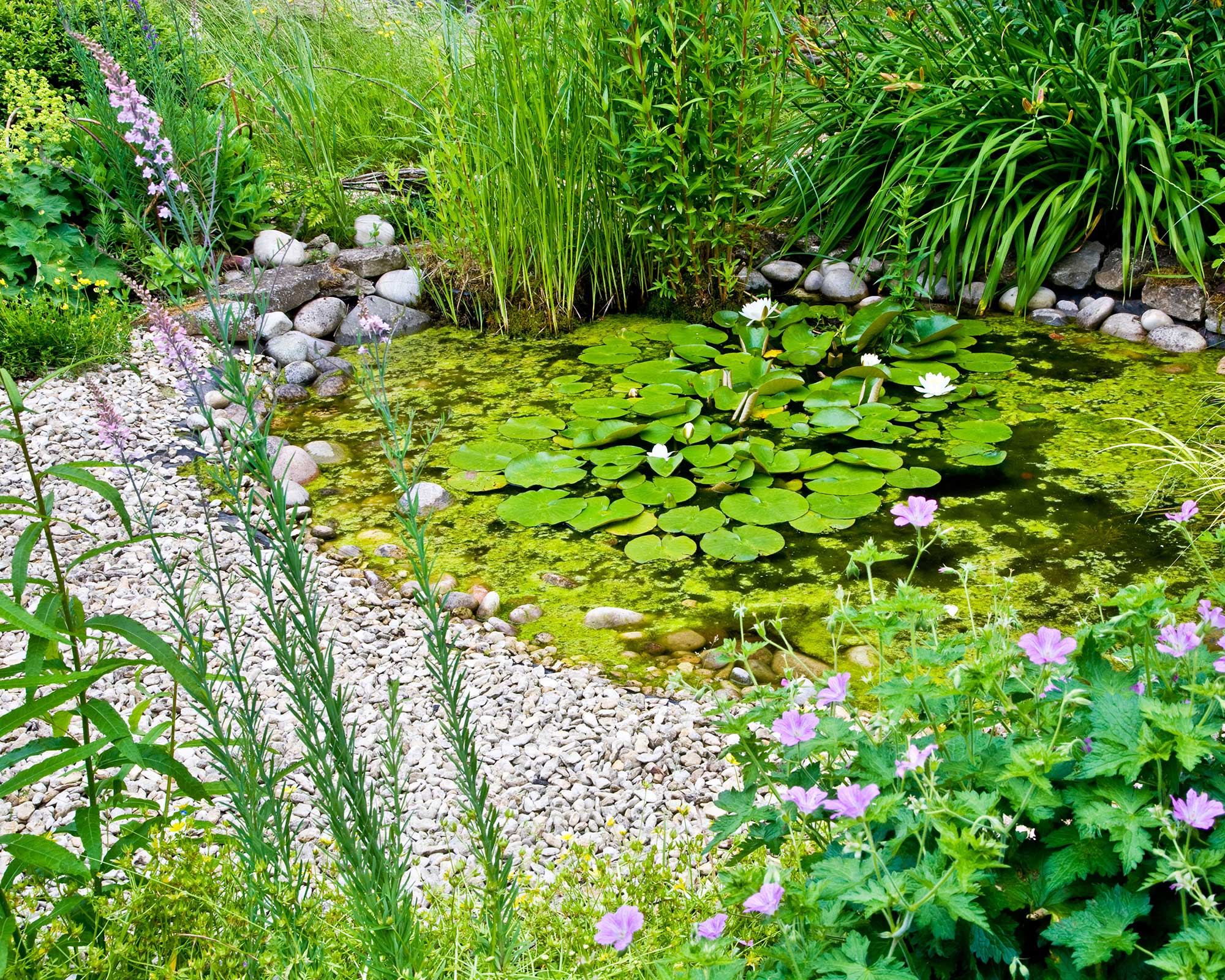
What plants should you use for a wildlife pond?
'Submerged pondweed is vital to help the pond stay clear,' advises the RSPB. 'And always use native plants in ponds,' they add. Rigid hornwort and whorled water-milfoil are recommended for the UK. 'You can buy these from garden centers or specialist pond suppliers.
'It's a great idea to include native marginal plants around the edge, poking clear of the surface to give perches and cover to wildlife.' Just be very careful to only use varieties that won't grow too large for the space, they add. 'Try plants such as water forget-me-not, lesser spearwort and marsh marigold.'
Floating plants are also valuable additions, as they offer somewhere for birds and insects to rest. The large leaves of water lilies also provide shelter for frogs, whilst the blooms provide nectar for pollinators.
There are lots more of the best pond plants in our guide.
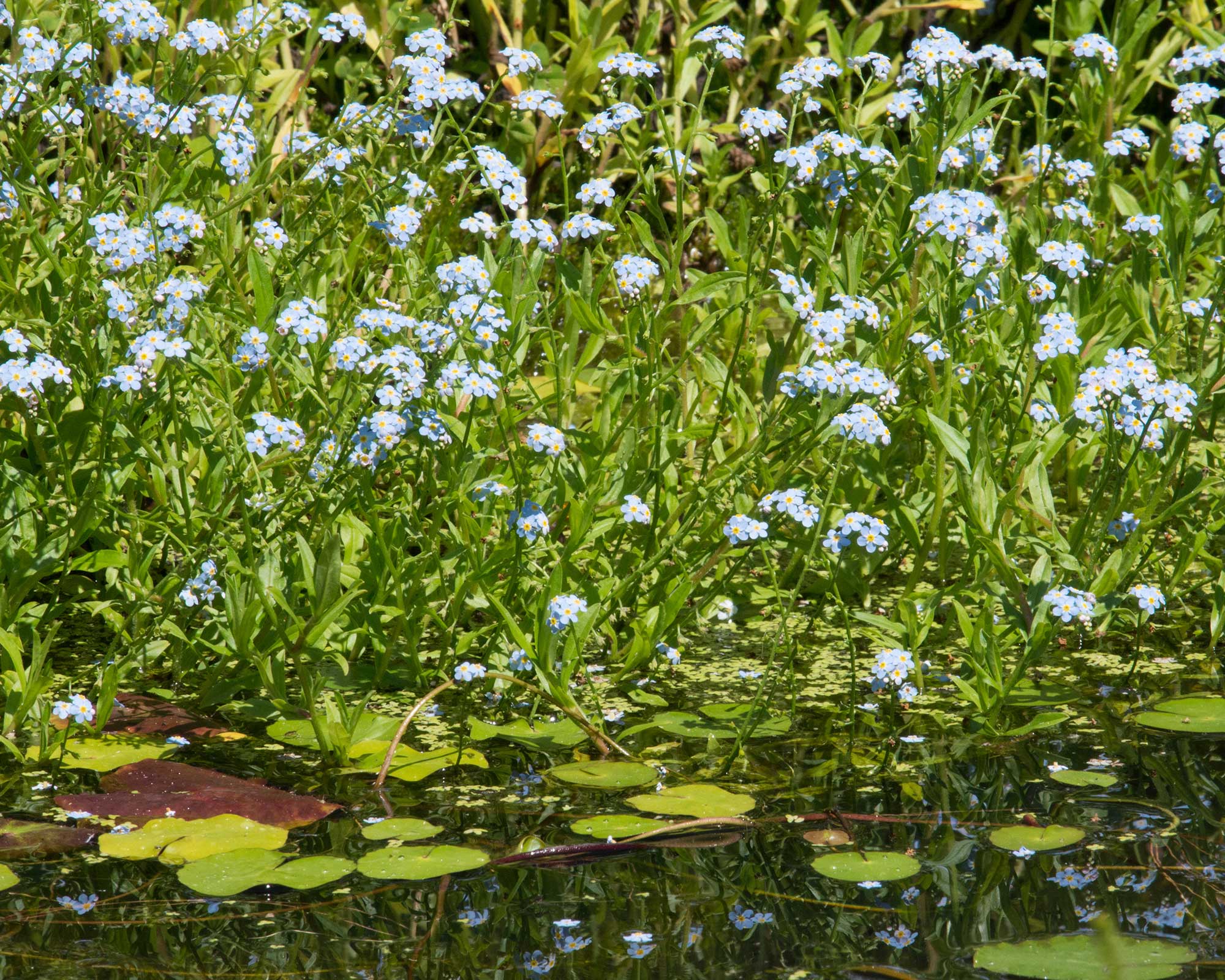
How should you look after a wildlife pond throughout the year?
Another great thing about wildlife ponds is they're super simple to look after – in fact they pretty much look after themselves – so are ideal if you're a fan of low maintenance garden ideas. However, there are a few jobs you can do to keep them at their best throughout the seasons, as the RSPB and the RHS explain:
- Spring: There will be a lot of activity going on below the surface of your pond, so be careful not to disturb it too much. You may wish to add a barley straw pad, which will help to reduce algae. Now is also a good time to add in any new plants (from mid-spring onwards) and divide up existing ones.
- Summer: The water levels of wildlife ponds can drop during periods of hot weather, so topping yours up with rainwater is a good idea. Keep grasses around the edge of the pond long, to provide shelter for creatures such as young frogs, however you may wish to cut back a few more vigorous plants and remove duckweed and blanketweed. Be careful to check for small insects and newts in the weeds that you remove – rinsing them in a bucket of pond water is a good way to get them out so they can be returned to the pond.
- Autumn: Autumn is a quieter time for a wildlife pond, so carry out any maintenance work now. Make sure to keep on top of removing fallen leaves, which will help keep the water healthy and ensure it gets enough light.
- Winter: In healthy ponds, freezing over is unlikely to reduce the oxygen levels too much. However, you might want to add insulation to smaller container ponds that aren't in the ground, by wrapping them in bubble wrap for instance. If there are no other drinking sources in your garden, pop a ball into the pond which will keep a section near the edge ice-free.
Don't forget, there are lots more ways you can help out nature. Our guide to wildlife garden ideas is full of inspiration.

The garden was always a big part of Holly's life growing up, as was the surrounding New Forest where she lived. Her appreciation for the great outdoors has only grown since then. She's been an allotment keeper, a professional gardener, and a botanical illustrator – plants are her passion.
